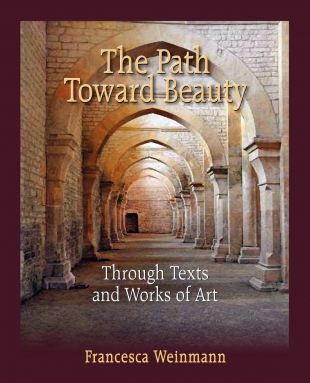Francesca Weinmann's classical education began in Italy. She then graduated with a B.A. in Art History from the Sorbonne in Paris and went on to receive an M.A. in Art History at the Institute of Fine Arts at New York University. Professor Weinmann created the Art History Department at the American University of Paris where she taught aesthetics and numerous Art History courses for 27 years. She died in 2011.
In The Path Toward Beauty, Weinmann serves as our guide through the storytelling art of prehistoric cave dwellers to the work of twentieth century abstract artists. Along the way beauty is a shape-shifter who seduces and often mystifies us. All lovers of art will enjoy the scope of this survey and relish its aesthetic and philosophical riches.
Weinmann's imaginative approach to art is mirrored in the story she tells about the rose in Antoine de Saint-Exupery's The Little Prince followed by her meditations on three beautiful objects: an ordinary Korean food bowl, an Iranian dish, and a bird sculpted by Brancusi.
One of the best things about this quest for beauty is the author's respect for the diversity of art outside the Western philosophical and artistic traditions. For example, Weinmann examines Yoruba African art where the emphasis is upon completeness, Chinese painting where order is harmony and harmony is beautiful, Hindu art where the accent in on metaphysical order, and North American Navajo art where beauty is connected to health, balance, and the natural world. Equally fascinating is her observation that whereas Buddhist artists celebrate the fragile nature of beauty, Muslims emphasize the perfection of their creations as offerings to God.
Weinmann does a good job exploring the many different dimensions of Western art from the Greek philosophy of beauty to the medieval and Renaissance criteria for beauty to the triumph of subjectivism in the eighteenth century to the quest for truth in twentieth century abstract art. She concludes: "Art did not always aim at beauty; art no longer aims at beauty, and yet there are works of art in all periods and in all civilizations that are simply and undeniably beautiful."
